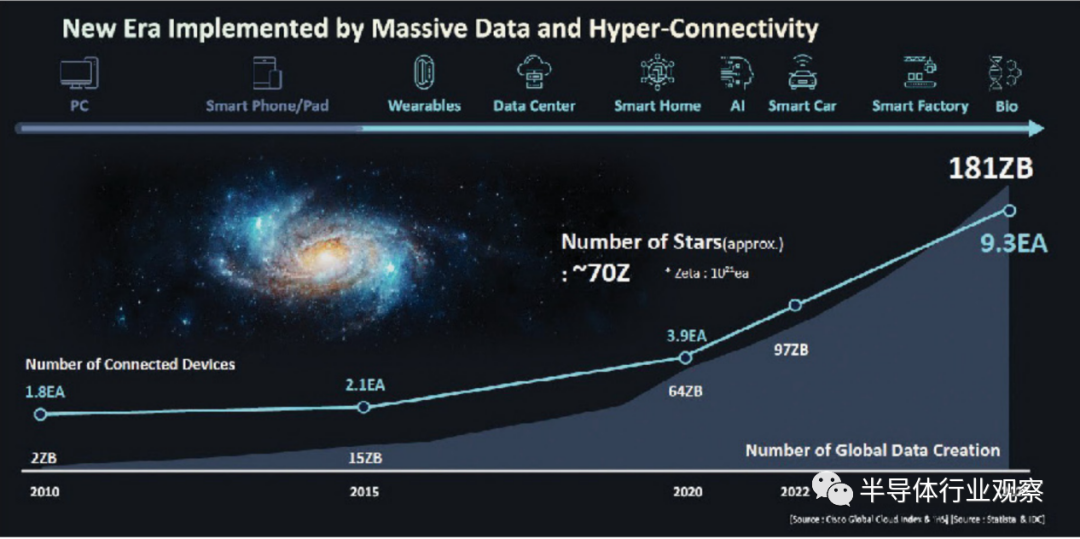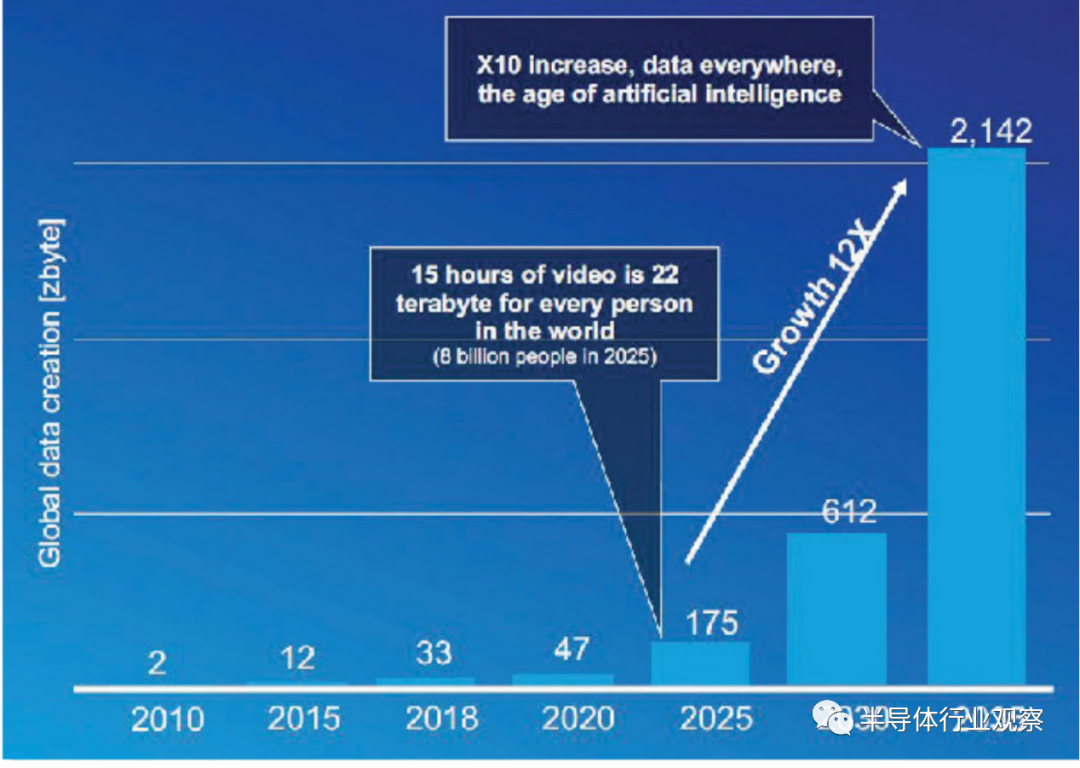Service hotline
+86 0755-83044319
release time:2023-09-09Author source:SlkorBrowse:12941
In this article, we summarize their insights into the main trends, challenges, and possible solutions for the semiconductor industry in the coming years.
More and more data
There are many drivers for using semiconductors, such as cloud computing, 5G, IoT, automotive, mobile, AR/VR, and smartphones. Just last year, there was also the generation of artificial intelligence and ChatGPT.
It is widely believed that the semiconductor market will reach 1 trillion dollars by 2030, almost double the current size. To achieve this goal, billions of dollars in incentives have been established under the push of governments in the United States (CHIPS Act), Europe, Japan, South Korea, China, and elsewhere. Last year, it
was announced that billions of dollars would be invested in new factories and research centers. Currently, efforts are being made to provide the necessary workforce.

Figures 1
Figures 1 and 2 illustrate this trend.

Figures 2
Mark Papermaster, AMD's Executive Vice President and CTO, pointed out that if we continue at the same pace, the power required for supercomputer installations will approach that of a nuclear power plant (Figure 3). "This is a very concerning data point. It really tells you that we are reaching the absolute limit of energy consumption," he said.
To address this, he proposed a new solution: changing the way computation is done by bringing memory closer to the CPU, as well as new, more energy-efficient chip designs and architectures. "We will take a holistic approach to bend the curve, so that we can improve our energy efficiency," Papermaster said. "We must expand the scope of collaboration and co-design optimization across the entire stack... and truly drive system-level implementation. We have to think differently and truly leverage innovation. If you look at our design approach so far - focusing on islands and then bringing everything together - it simply cannot change the curve," he said.

Figure 3
Artificial intelligence is bound to make things worse, according to Papermaster. He stated, "AI with large language models and the energy required for training actually increases energy consumption." He pointed out that today, billions of parameters are used to train models like ChatGPT3, but it is now moving towards tens of trillions of parameters.
The explosive growth of artificial intelligence
Imec CEO Luc Van den Hove states that the rapid growth of generative artificial intelligence is driven by three main factors: advancements in AI models, access to large amounts of data, and significant improvements in computing power. "The computational demand of AI is indeed experiencing explosive growth, and we are only just getting started," he says. "To sustainably generate the required computing power, we will need devices and systems with significantly improved performance."
Jensen Huang, CEO of NVIDIA, also points out that deep learning has grown a million-fold in scale over the past decade. "And then ChatGPT came along... artificial intelligence spread throughout the world," he says. "ChatGPT is a generative pre-trained Transformer, a large language model with trillions of parameters trained on billions of words and sentences. It has learned the representation of human language and can generate text. ChatGPT is revolutionary due to its ease of use and incredible capabilities. It provides a glimpse into the future of computers that understand any programming language and perform a wide range of tasks."
Huang further notes that there are already over a thousand generative AI startups inventing new applications. For example, Tabnine is a contextual code assistant that helps complete code lines or generates whole functions based on prompts. It can be programmed using various popular languages, from JavaScript and Python to Rust, GO, and BASH.
Runway uses generative AI to create and edit images and videos. Its production quality is so impressive that multiple Oscar-nominated films have utilized it. With Runway's generative AI, anyone can tell stories through images and videos.
Insilico Medicine employs generative AI technology, which allows them to create a candidate drug in one-third of the time and at a cost only one-tenth of traditional methods, typically taking over four years and costing around $500 million. Insilico Medicine is used by more than 20 pharmaceutical companies.
"The market impact of perception AI has already been significant," says Huang. "The impact of generative AI will be even greater. The extraordinary ease of use has enabled ChatGPT to reach over 100 million users in just a few months, making it the fastest-growing application in history." He states that generative AI will be able to understand and enhance various forms of information, "from human language, music, images, and videos to genetics, proteins, and chemicals." Moreover, he supports the idea that AI will personalize and generate content for the 200 million websites and automate billions of customer service calls. Generative AI will also assist 25 million software developers and hundreds of millions of creators.
What is the next wave of AI? According to Huang, the answer is "Embodied AI," which refers to intelligent systems that can understand, reason, and interact with the physical world. Examples include robots, autonomous vehicles, and even chatbots that become smarter by understanding the physical world.
To be continued...









Site Map | 萨科微 | 金航标 | Slkor | Kinghelm
RU | FR | DE | IT | ES | PT | JA | KO | AR | TR | TH | MS | VI | MG | FA | ZH-TW | HR | BG | SD| GD | SN | SM | PS | LB | KY | KU | HAW | CO | AM | UZ | TG | SU | ST | ML | KK | NY | ZU | YO | TE | TA | SO| PA| NE | MN | MI | LA | LO | KM | KN
| JW | IG | HMN | HA | EO | CEB | BS | BN | UR | HT | KA | EU | AZ | HY | YI |MK | IS | BE | CY | GA | SW | SV | AF | FA | TR | TH | MT | HU | GL | ET | NL | DA | CS | FI | EL | HI | NO | PL | RO | CA | TL | IW | LV | ID | LT | SR | SQ | SL | UK
Copyright ©2015-2025 Shenzhen Slkor Micro Semicon Co., Ltd